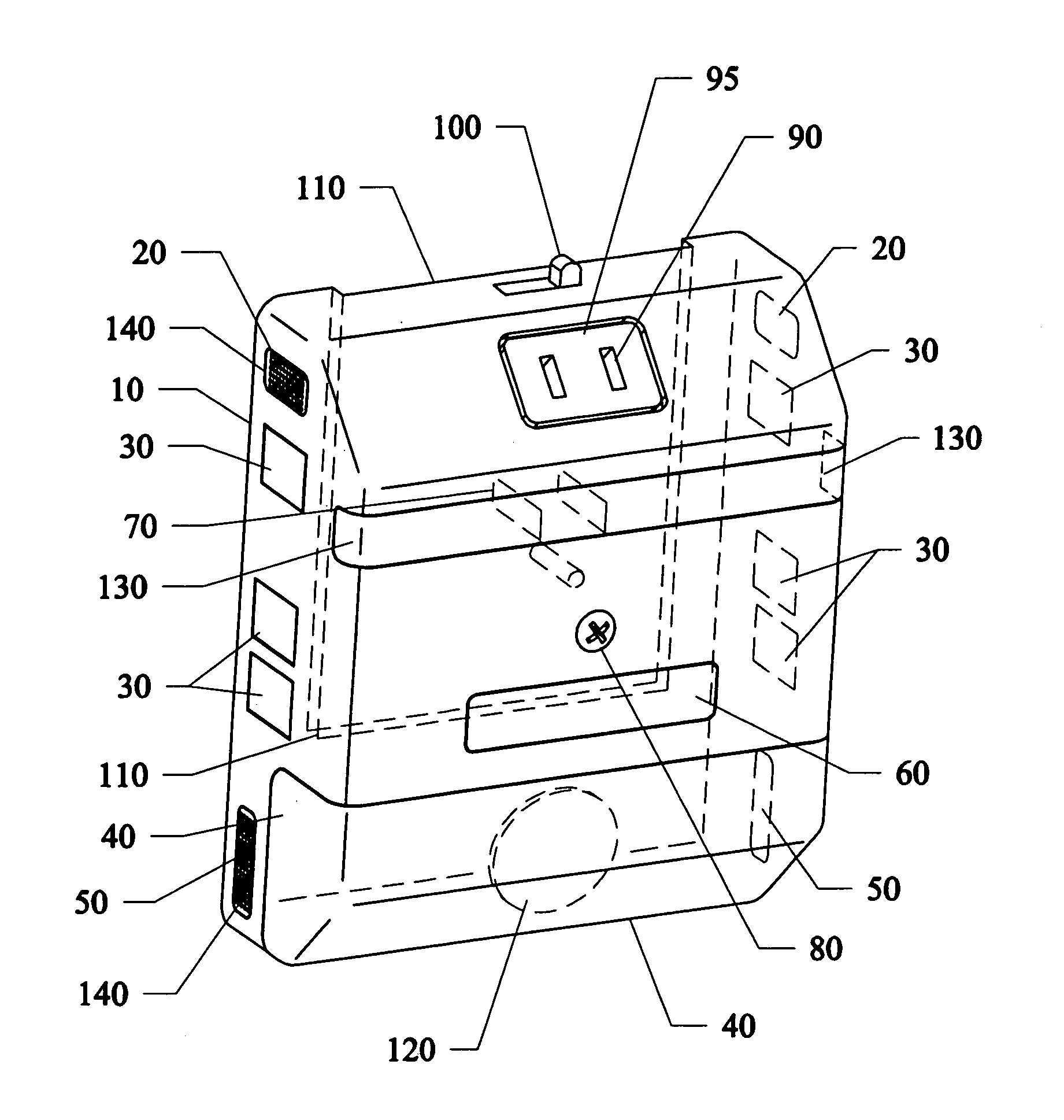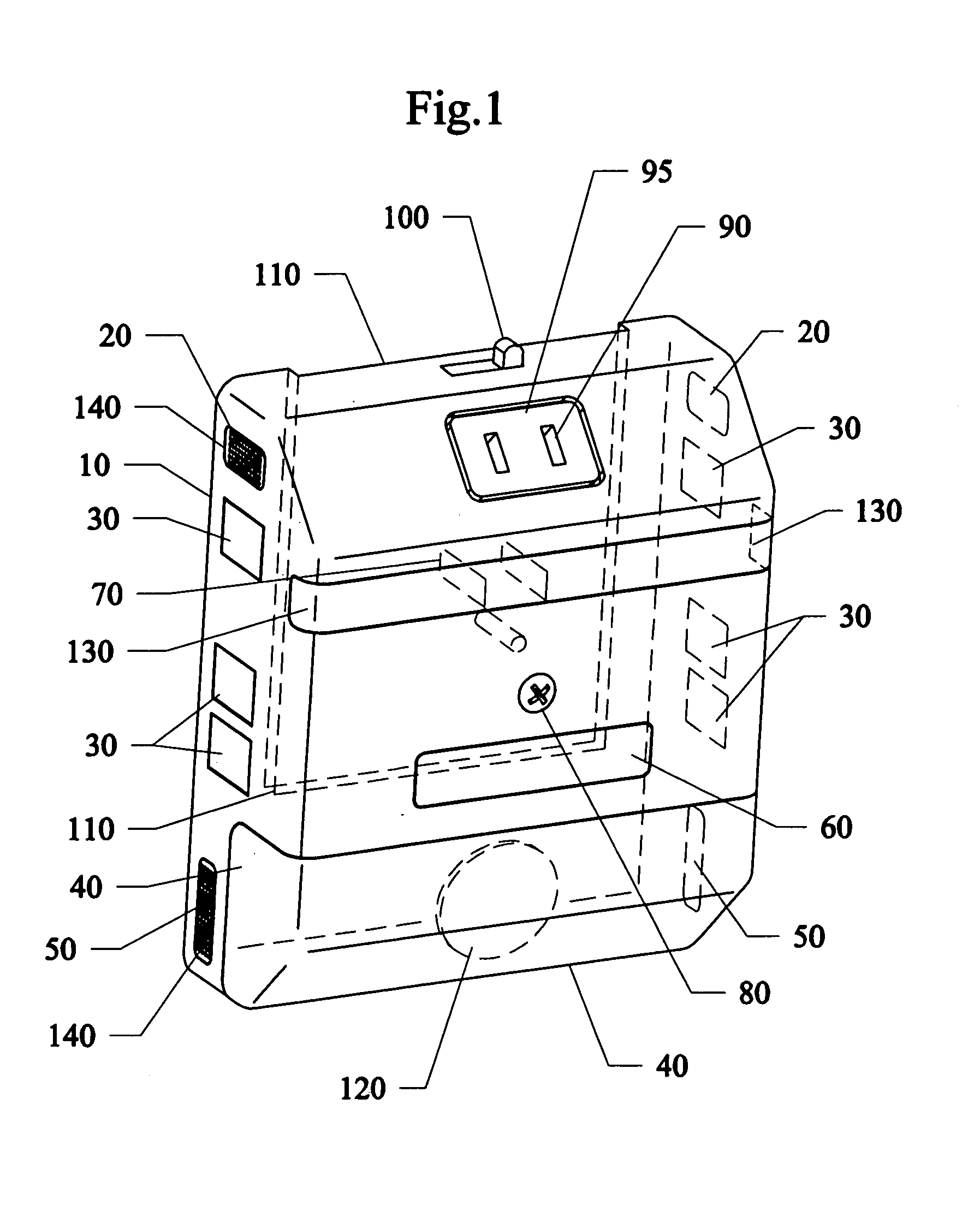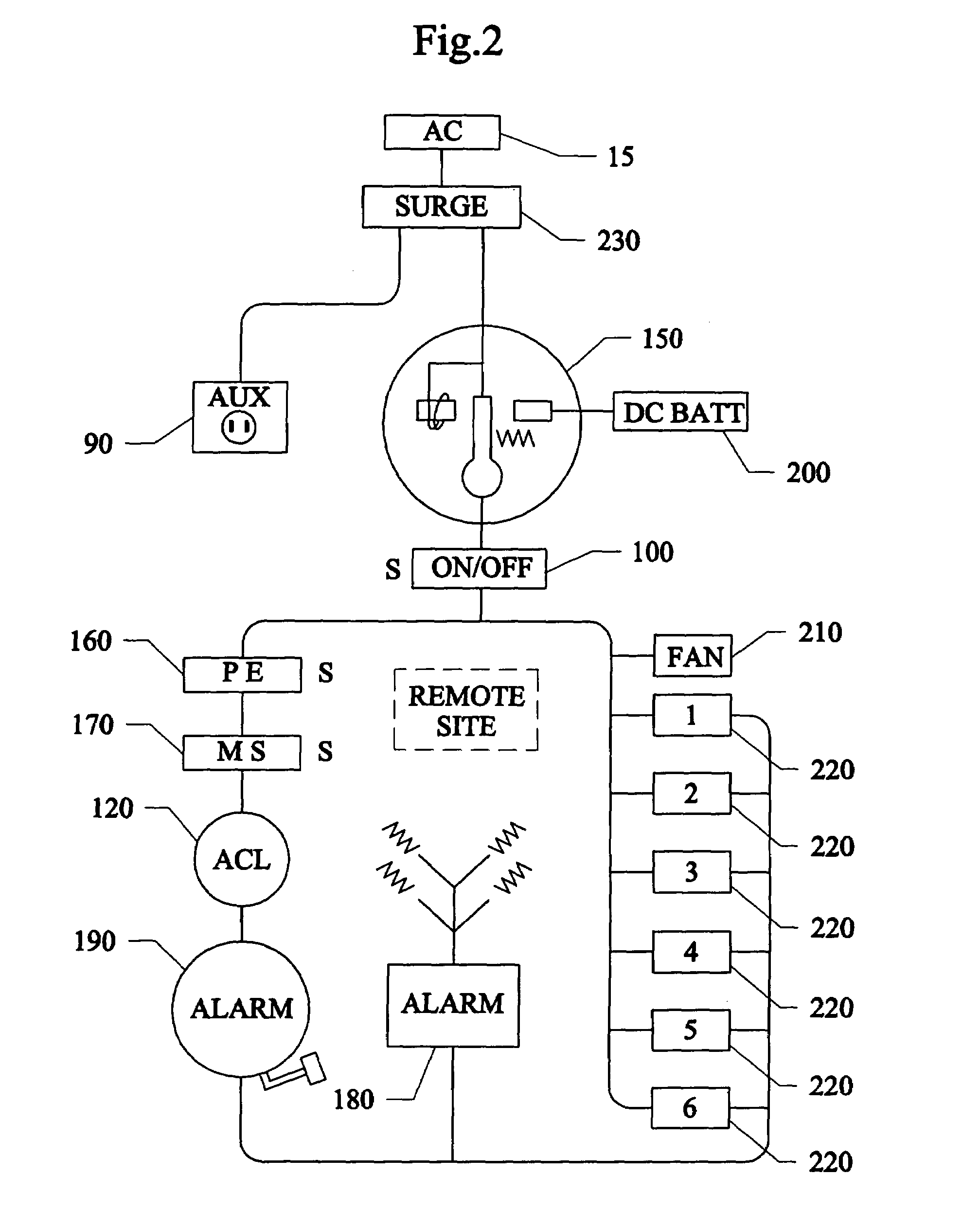Anti-carcinogenic lights and lighting
a technology applied in the field of anti-carcinogenic lights and lighting, can solve the problems of affecting the production of neonocturnal secretions of pineal glands, affecting the production of neonocturnal secretions, so as to achieve the effect of greatly reducing the lag of the j
- Summary
- Abstract
- Description
- Claims
- Application Information
AI Technical Summary
Benefits of technology
Problems solved by technology
Method used
Image
Examples
Embodiment Construction
[0027]Before explaining the disclosed embodiments of the present invention in detail it is to be understood that the invention is not limited in its applications to the details of the particular arrangements shown since the invention is capable of other embodiments. Also, the terminology used herein is for the purpose of description and not of limitation.
REFERENCE NUMERALS AND THEIR CORRESPONDING LABELS
[0028]10 Outer Case
[0029]15 AC Power Supply
[0030]20 Atmosphere Sample Exhaust
[0031]30 Monitor Detector Insertion Port(s) 30
[0032]40 Anti-Carcinogenic™ Light Window
[0033]50 Atmosphere Sample Intake
[0034]60 Photo-electric Cell
[0035]70 Receptacle Prongs (to AC Power Source 15)
[0036]80 Child-Safe Screw
[0037]85 Receptacle Box Cover Plate
[0038]90 Auxiliary Receptacle
[0039]95 Auxiliary Receptacle Cover Plate
[0040]100 Power Switch Manual Over-ride
[0041]110 Outer Case Back Recess (receives Auxiliary Receptacle Cover Plate 95)
[0042]120 Anti-Carcinogenic™ Light Source
[0043]130 Motion Sensor Wind...
PUM
 Login to View More
Login to View More Abstract
Description
Claims
Application Information
 Login to View More
Login to View More - R&D
- Intellectual Property
- Life Sciences
- Materials
- Tech Scout
- Unparalleled Data Quality
- Higher Quality Content
- 60% Fewer Hallucinations
Browse by: Latest US Patents, China's latest patents, Technical Efficacy Thesaurus, Application Domain, Technology Topic, Popular Technical Reports.
© 2025 PatSnap. All rights reserved.Legal|Privacy policy|Modern Slavery Act Transparency Statement|Sitemap|About US| Contact US: help@patsnap.com



